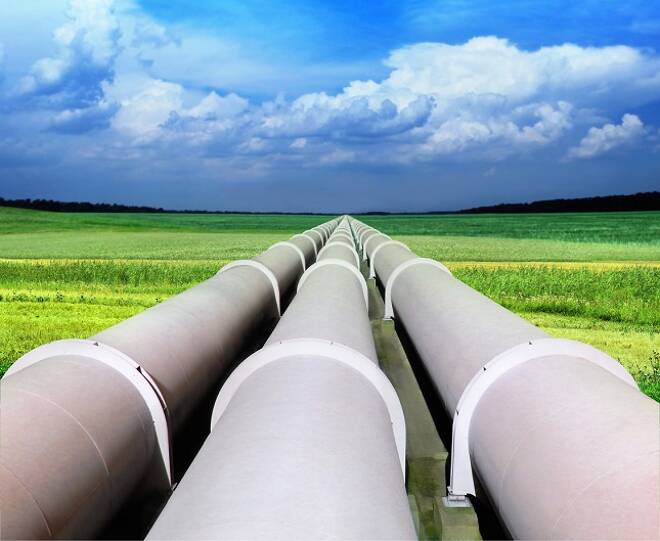Advertisement
Advertisement
Natural Gas Price Fundamental Daily Forecast – Needs Sustained LNG Exports to Prevent Storage Issues
By:
Basically, it’s going to take sustained LNG export momentum and probably early winter-like temperatures to prevent storage surplus programs.
Natural gas futures are edging lower early Friday but inside yesterday’s wide range. Despite the setback, the market is still in a position to close higher for the week. On Thursday, the market soared after a government report showed a lighter-than-expected storage build. Meanwhile, liquefied natural gas (LNG) levels further recovered from interruptions imposed by the uncompromising storm season in the Gulf of Mexico.
At 06:57 GMT, December natural gas is trading $3.333, down $0.010 or -0.30%.
US Energy Information Administration Weekly Storage Report
This week’s EIA report covering the week-ending September 18 came in lighter than last week as expected and the price action indicates that traders thought it was bullish.
The EIA reported Thursday that domestic supplies of natural gas rose by 66 billion cubic feet (Bcf). That was smaller than the increase of 77 Bcf forecast by analysts polled by S&P Global Platts. Total stocks now stand at 3.680 trillion cubic feet (Tcf), up 504 Bcf from a year ago, and 407 Bcf above the five-year average, the government said.
There was a lot of interest in this report because traders wanted to know if the previously reported larger-than-normal print was a one-off anomaly or reflective of a looser market.
Ahead of the report, Natural Gas Intelligence (NGI) reported, “A Bloomberg survey found estimates ranging from 68 Bcf to 82 Bcf, with a median of 77 Bcf, while estimates in a Wall Street Journal poll ranged from 71 Bcf to 85 Bcf, with an average of 77 Bcf. A Reuters poll of 13 analysts showed estimates ranging from 68 Bcf to 96 Bcf, with a median of 76 Bcf. NGI projected an injection of 71 Bcf.”
Last year, EIA recorded a 97 Bcf build for the period, and the five-year average is an injection of 80 Bcf.
Short-Term Weather Outlook
According to NatGasWeather for September 24 to September 30, “Showers continue across the Southeast as remnants of Beta drift slowly eastward. Hot conditions will persist over the Southwest with highs of 90s and 100s, while cooling rains continue across the Northwest. High pressure will rule much of the rest of the U.S. into early next week with comfortable highs of upper 60s to 80s. A major pattern change will occur mid-next week as a strong early season cool shot pushes into the Midwest and Northeast with highs of 40s to 60s, while hot pressure builds over the West with highs of 80s to 100s. Overall, national demand will be low.”
Near-Term Outlook
Last week’s small storage build likely reflected improved LNG volumes, as feed gas levels hovering near 8 Bcf at the end of the week, as well as continued cooling demand amid late summer heat in key demand areas.
Looking ahead, improvements in LNG volumes will be the key to whether this market can sustain the rally since the forecasts don’t show weather to be a major factor over the near-term.
With seven more weeks in the traditional storage season, an average weekly injection of 45.71 Bcf would put storage on track to hit 4.0 Tcf. At that level, containment could still be challenging.
“It all hinges on containment or not, and we continue to walk a very fine line there,” Bespoke said.
Basically, it’s going to take sustained LNG export momentum and probably early winter-like temperatures to prevent storage surplus programs.
For a look at all of today’s economic events, check out our economic calendar.
About the Author
James Hyerczykauthor
James Hyerczyk is a U.S. based seasoned technical analyst and educator with over 40 years of experience in market analysis and trading, specializing in chart patterns and price movement. He is the author of two books on technical analysis and has a background in both futures and stock markets.
Advertisement
